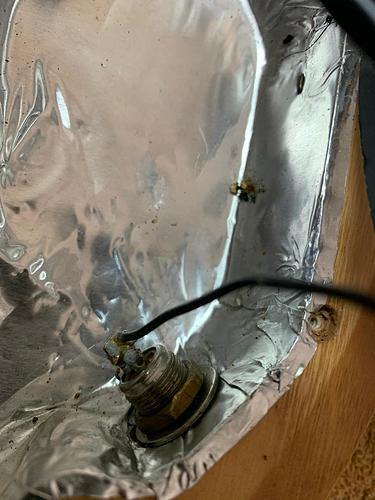So right in the middle of ThunderStruck my bass cuts on and off then out. Bear in mind its a Peavey t40 1979 issue so its no spring chicken but ive never had any issues with it until now.
After some trouble shooting it had to be electrical. I took the thing apart for the first time…and low and behold! A red wire was off the jack input! Off to the hardware store for a solder kit…(never done this before either…) An hour later soldered…bridge intonation… and then some sting buzz. I found the truss rod adjustment…heck cant hurt it and tweaked that and…BOOOM! Back in business!
Nice work! IMO 90% of bass maintenance can be done DIY with youtube and a hardware store. Not saying it’s better than taking it to a pro, but that was a nice surprise for my wallet.
Soldering electronics is still pretty intimidating to me, but i’ll probably give it a go at some point — how was your experience with it?
Soldering is surprisingly learnable. This video does a pretty good job teaching technique:
The only criticism I have of that video is that it shows a bad example for the two wires being splice soldered end to end. They should be twisted together first to make a solid mechanical connection (something they say and then don’t really do very well in this case) before soldering.
I’d spend the money on the cheapest temperature controlled soldering iron you can find. This costs some $$ and will save a ton of frustration or bad results. An iron that is too hot or too cold can damage the parts. An iron that is tool cold will start to melt things around it before the joint gets hot. Very annoying.
It’s all covered in the video, but just to re-emphasize key points . . .
- make a solid mechanical joint before soldering
1.5) make sure the tip of the soldering iron is wiped clean (wet sponge is good) - heat the parts with the broad side of the iron
- apply the solder to the parts, not the iron
- don’t move anything while it cools
- look for the nice shiny cone shape
- if it looks grainy it wasn’t hot enough or moved before it cooled and should be done again
You can twist ends of wire together and practice all you want before touching something you care about. It’s possible to get the hang of it after a few tries. Wire is good to practice with because you will see if you are getting it too hot and melting the insulation back.
Electronics is fun. I was just getting back in to it but it got vetoed because our place just isn’t large and ventilated well enough to deal well with flux fumes and it freaked out my wife.
For a good inexpensive iron with a temperature control, Hakko makes a few that are not too bad and will last a lifetime. You can get a FX-600 for like $35.
Nice Weller stations like in the video (or Hakko stations) are better, but a lot more expensive.
A whole lot of high quality electronics tools can be bought from China too, really good quality/price ratios there.

